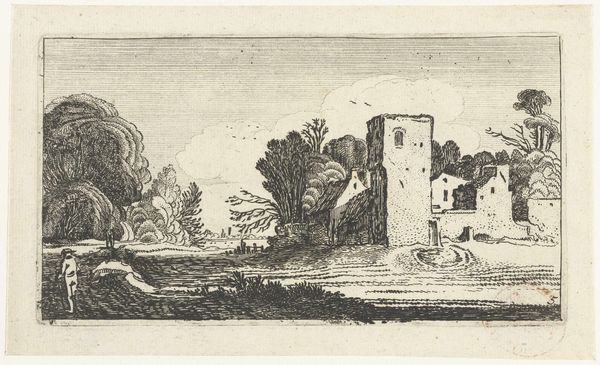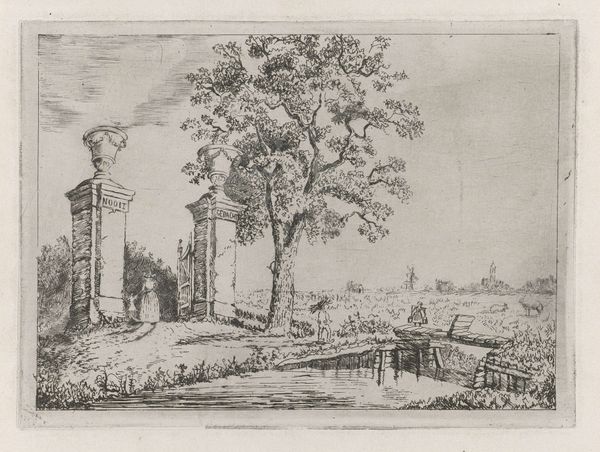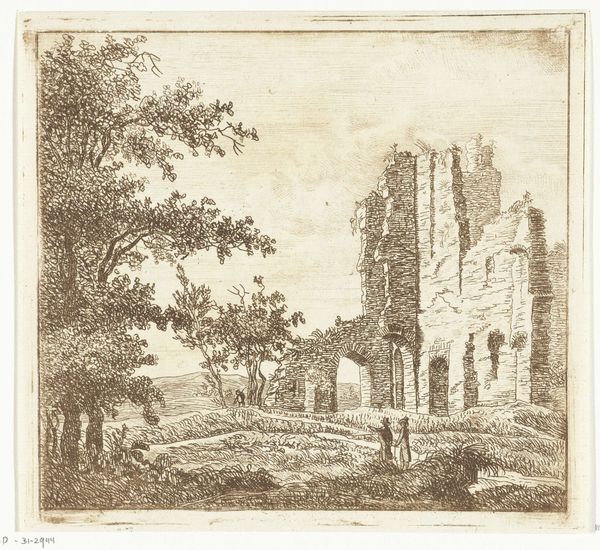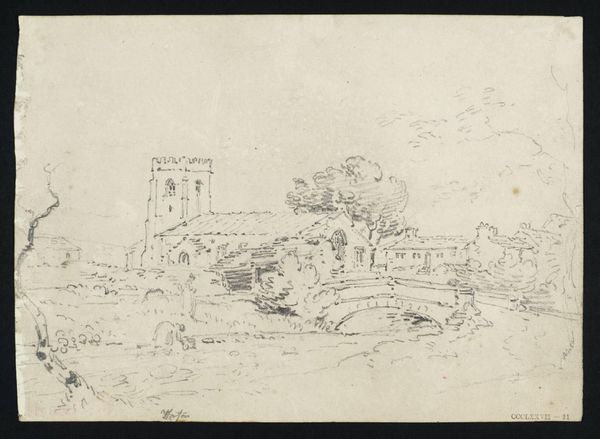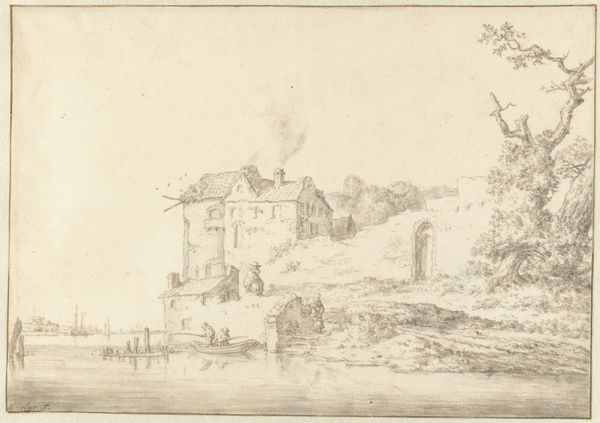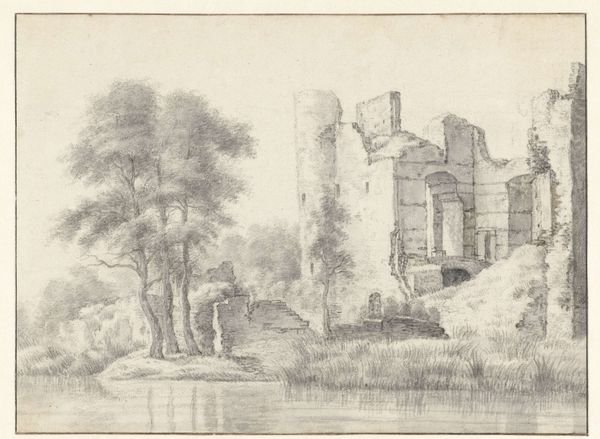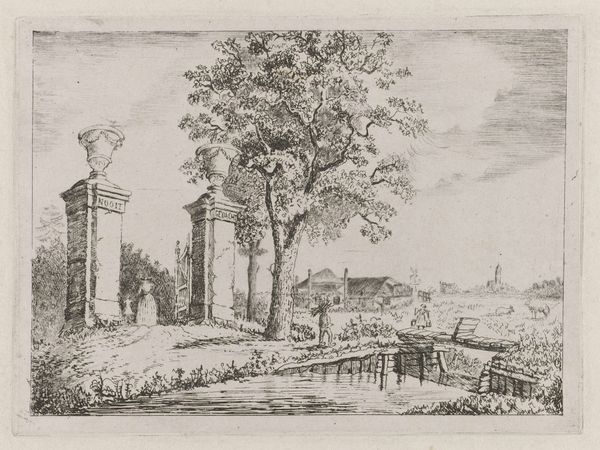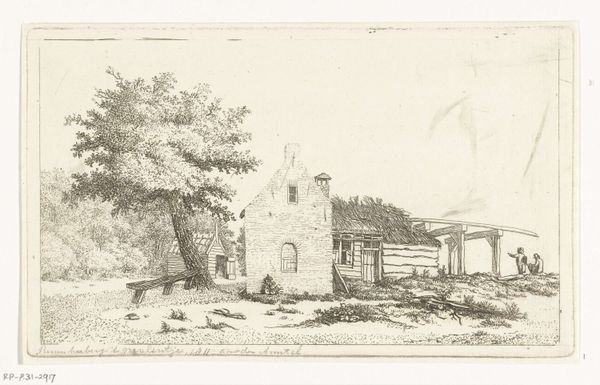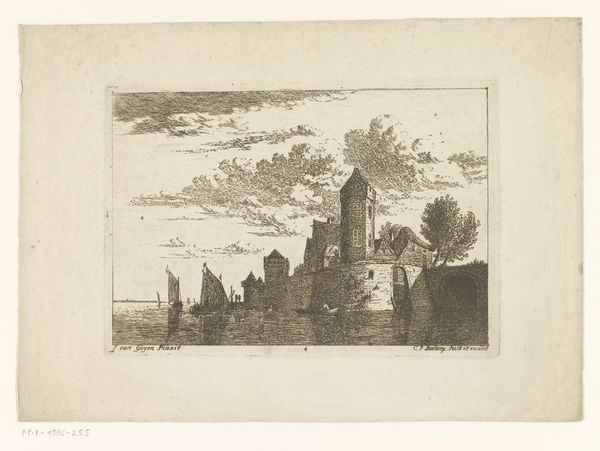
drawing, print, etching, ink
#
drawing
# print
#
pen sketch
#
etching
#
landscape
#
etching
#
ink
#
romanticism
#
realism
Dimensions: height 42 mm, width 74 mm
Copyright: Rijks Museum: Open Domain
Reinierus Albertus Ludovicus baron van Isendoorn à Blois created this etching of a building ruin sometime in the first half of the 19th century. The image shows a dilapidated structure, trees growing out of its walls, and two figures in the foreground. In the Netherlands during this period, there was a growing interest in national history and identity, particularly in the wake of French occupation. Ruins, like the one depicted, became popular symbols of a glorious past and were seen as picturesque reminders of the transience of human achievement. Etchings were a popular medium, as they allowed for the easy reproduction and distribution of images to a wide audience. Aristocrats like Reinierus Albertus Ludovicus baron van Isendoorn à Blois often engaged in art as a pastime, reflecting their refined taste and social standing. Art historians delve into period publications, estate inventories, and social registers to better understand the cultural significance of the artwork. Ruins, in this context, are more than just remnants of old buildings, they are testaments to a nation's history and the social values attached to it.
Comments
No comments
Be the first to comment and join the conversation on the ultimate creative platform.
